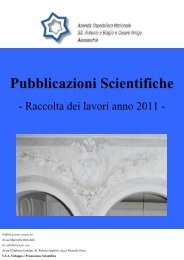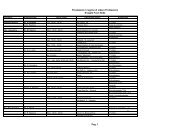Working Paper of Public Health Volume 2012 - Azienda Ospedaliera ...
Working Paper of Public Health Volume 2012 - Azienda Ospedaliera ...
Working Paper of Public Health Volume 2012 - Azienda Ospedaliera ...
Create successful ePaper yourself
Turn your PDF publications into a flip-book with our unique Google optimized e-Paper software.
<strong>Azienda</strong> <strong>Ospedaliera</strong> Nazionale“SS. Antonio e Biagio e Cesare Arrigo”<strong>Working</strong> <strong>Paper</strong> <strong>of</strong> <strong>Public</strong> <strong>Health</strong>nr. 3/<strong>2012</strong>Note: [1] number <strong>of</strong> cadaveric organ donations per million population; [2] country has presumedconsent law; [3] number <strong>of</strong> deaths by brain vascular disease per 100,000 population; [4] number<strong>of</strong> deaths by traffic accident per 100,000 population; [5] GDP per capita (US$); [6] Total healthexpenditure per capita (US$); [7] percentage <strong>of</strong> population that access the Internet; [8] Catholiccountry (>50% population); and [9] Common law as legal system.Unfortunately, the Brazilian organization responsible for collecting data on issues relatedto transplantation (Sistema Nacional de Transplantes) began only in 1997, which meansthere is no <strong>of</strong>ficial data on cadaveric organ donation before that. However, there is acommon belief in the Brazilian medical community that presumed consent had a negativeimpact on organ donation in Brazil. In 1998, Brazil had the lowest cadaveric organdonation rate (2.6 pmp). As a result, in the same year, the Brazilian government added anew paragraph to the presumed consent law, stating that physicians should get permissionfrom the deceased’s family to remove organs (Gsillag, 1998). The following year, thecadaveric organ donation had an expressive increase, which was 4.1 pmp. A smallincrease was verified in the later years analyzed in this paper and in 2002 the cadavericorgan donation was 5.4 pmp.Table 1 gives us an overview <strong>of</strong> the sample descriptive statistics. Approximately 60% <strong>of</strong>countries have presumed consent for organ donation. Of presumed consent countries,65% are catholic and only 10% have common law as legal system. For the same group,40% have GDP per capita above the sample average (US$ 1879.22). Only three countieshad spent more than 10% <strong>of</strong> their GDP in the health sector: USA (13.54%), Germany(10.70%) and Switzerland (10.67%); the lowest rates were observed in Venezuela(5.45%), Latvia (5.54%), Slovak Republic (5.80%), Chile (5.86%) and Poland (5.92%).All <strong>of</strong> these data are related to average values from 1998 to 2002.The number <strong>of</strong> deaths by brain failure is larger in OECD countries, with females the mostaffected. However, Latin American countries have more deaths by traffic accident whencompared to other countries, males being responsible for most <strong>of</strong> them. These twovariables are important for organ donation, because a representative part <strong>of</strong> cadavericdonations come from them.Internet access has increased in all countries between 1998 and 2002, except in Norway.Almost half <strong>of</strong> the Swedish population had access to the Internet for the period 1998-2002. The USA was the second in terms <strong>of</strong> access to the Internet and the lowest rates10



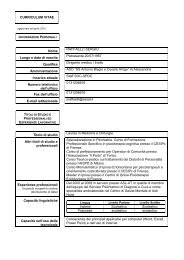
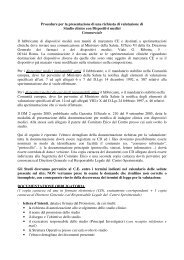

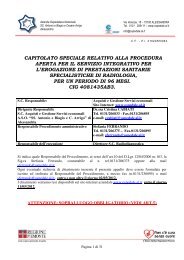
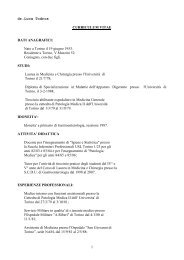
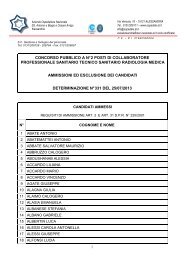

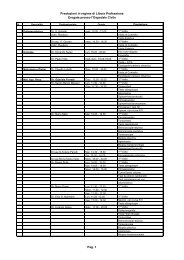


![[torino - 1] lastampa/urc/01 ... 26/10/09 - Azienda ...](https://img.yumpu.com/44058002/1/190x32/torino-1-lastampa-urc-01-26-10-09-azienda-.jpg?quality=85)

